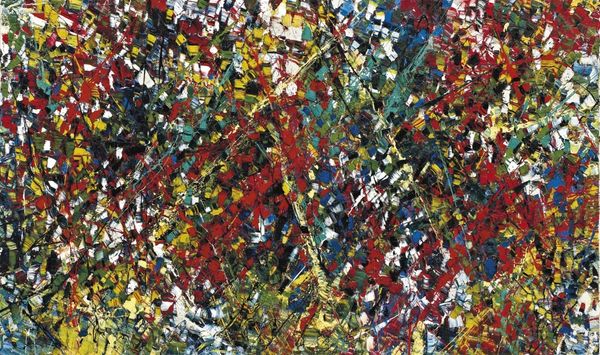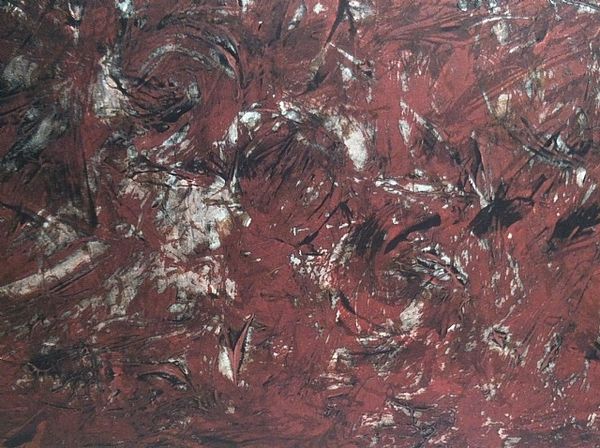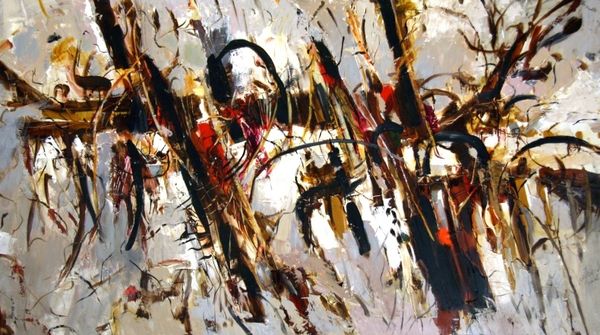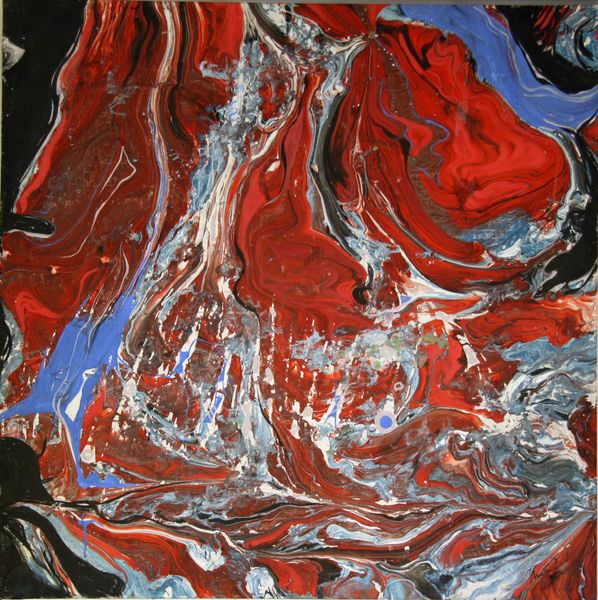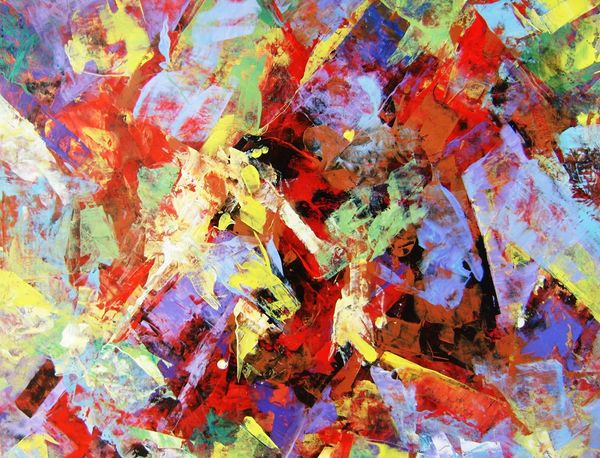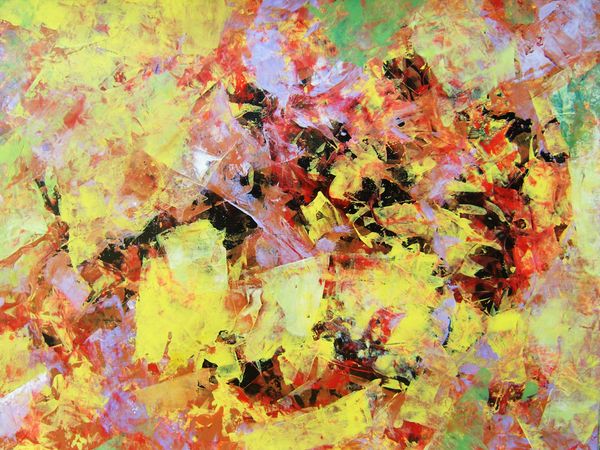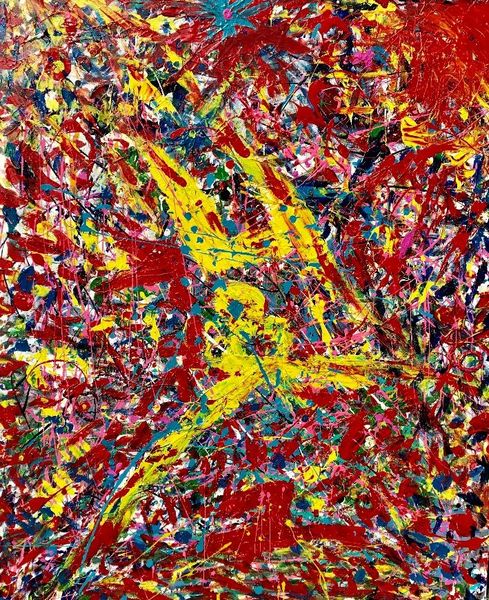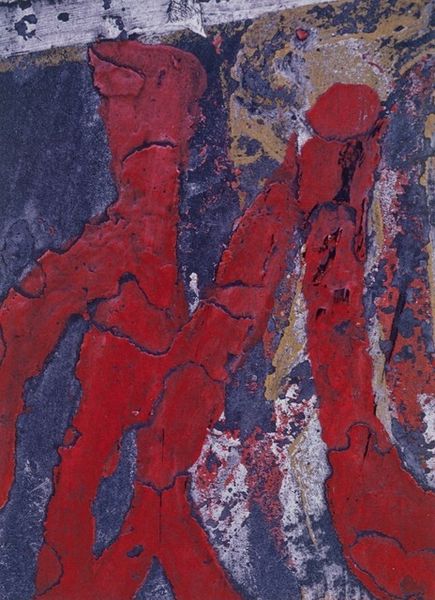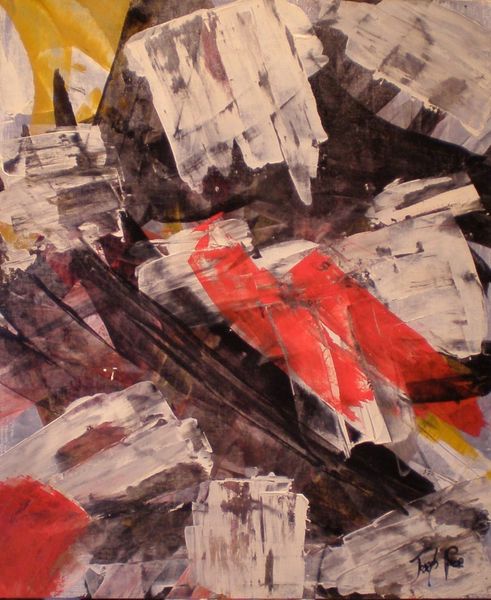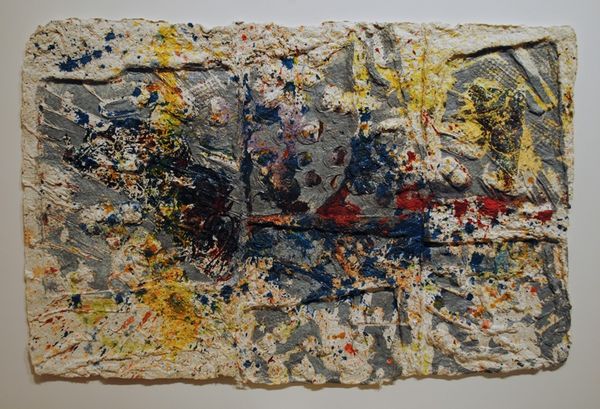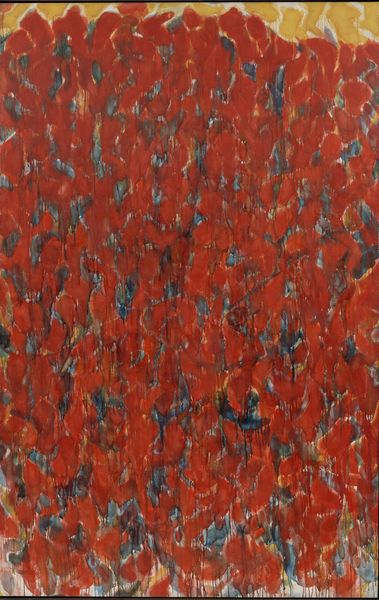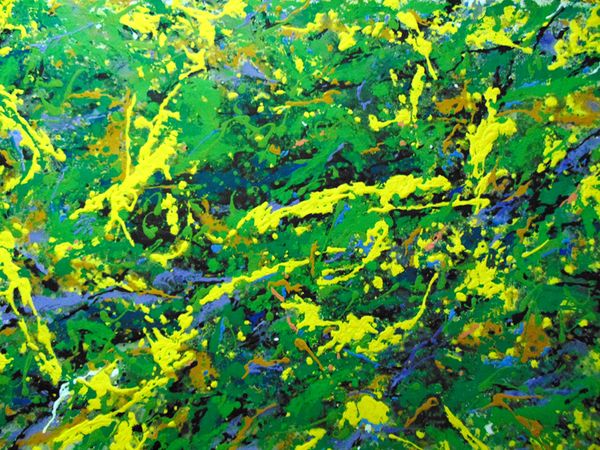
painting, acrylic-paint
#
action-painting
#
abstract-expressionism
#
abstract expressionism
#
painting
#
acrylic-paint
#
abstraction
#
line
Copyright: Vilen Barsky,Fair Use
Editor: This is Vilen Barsky’s “In Honor of Pollock,” created in 1959 using acrylic paint. It's such a dynamic and intense painting. I'm curious – what catches your eye when you look at it? Curator: The material execution is everything here. Think about the physical labor involved, the very act of dripping, flinging, and manipulating the acrylic. The gesture becomes the subject. How does the process of its making—a post-war context ripe with anxiety— inform your interpretation? Editor: That's a good point. I see the energy, almost a frenetic quality, in the lines and splatters. I guess it's easy to just think about the finished image, not the labor that went into making it, especially with something so abstract. Curator: Precisely. And think beyond the artist. What were the social conditions of acrylic paint production at the time? Who had access to these new materials, and how did their availability shape artistic possibilities? Editor: So you are thinking about access, the material itself as an agent of creation and a symbol of the economic landscape? That really shifts my understanding of the work beyond just aesthetics. Curator: Absolutely. Pollock’s legacy also exists materially, reproduced endlessly, bought, sold. Barsky is creating a material response to the industry around art. He isn't just inspired; he is investigating the entire machine that turns action into value. Editor: I hadn't considered the critique inherent in choosing to honor someone through a similar, but distinct, material process. Curator: Right, by focusing on the 'how' and the 'why' of its physical manifestation, we begin to grasp its deeper social and economic resonance. It's more than just a painting; it’s a material document of its time. Editor: That’s given me so much to consider – I'm now looking at the painting with entirely different eyes, thinking about the production, labor and social landscape embedded in those paint splatters. Thanks!
Comments
No comments
Be the first to comment and join the conversation on the ultimate creative platform.
